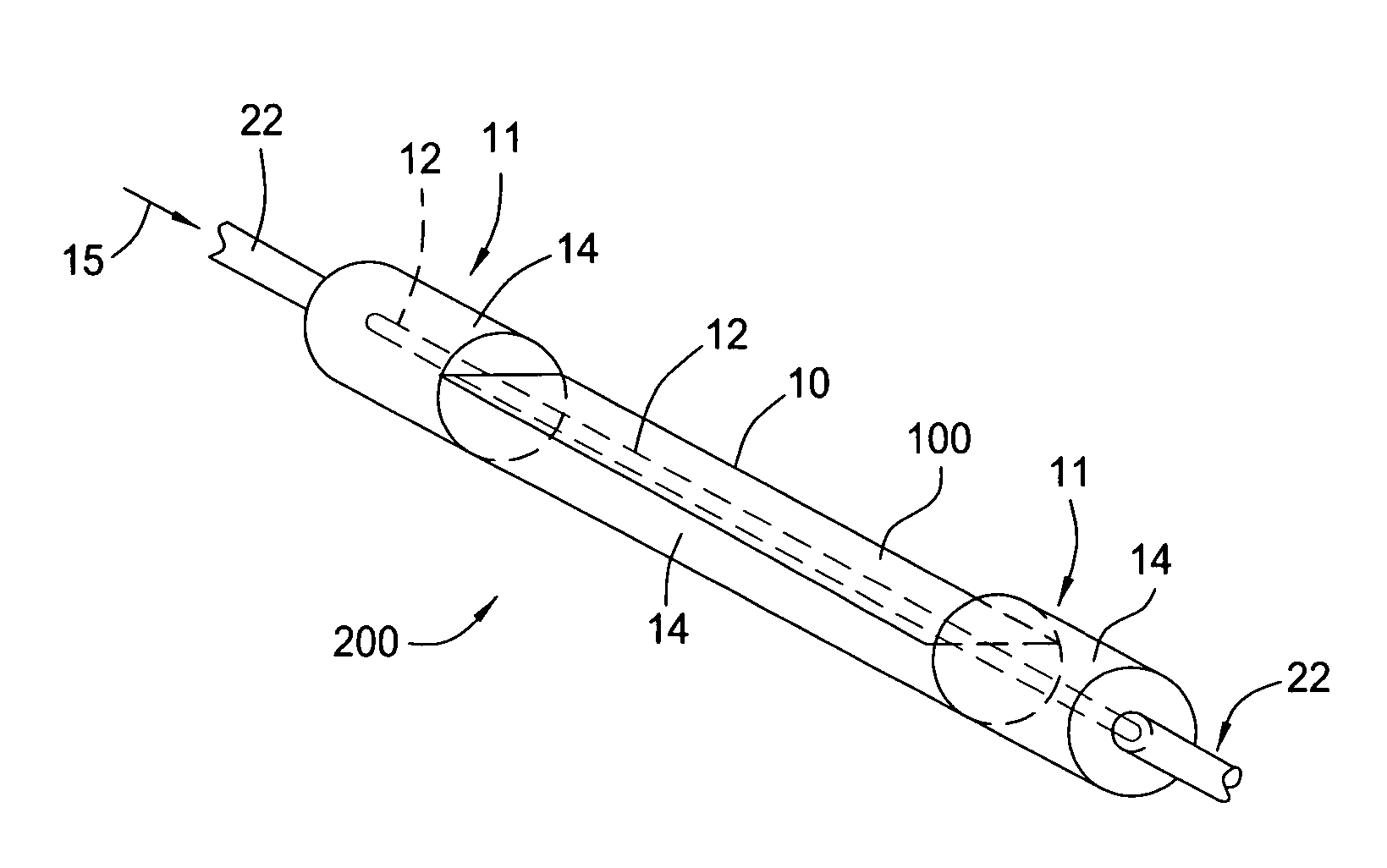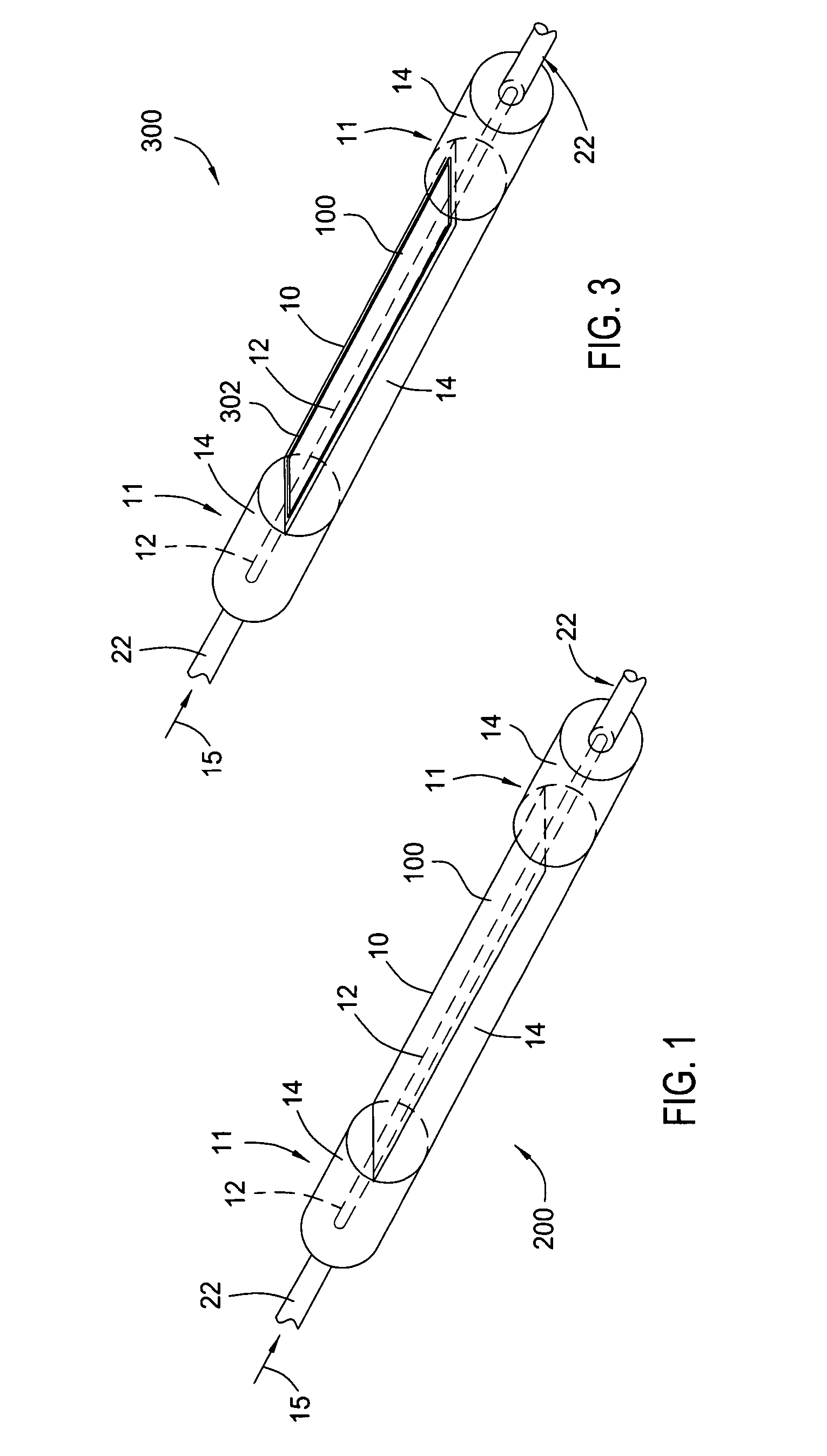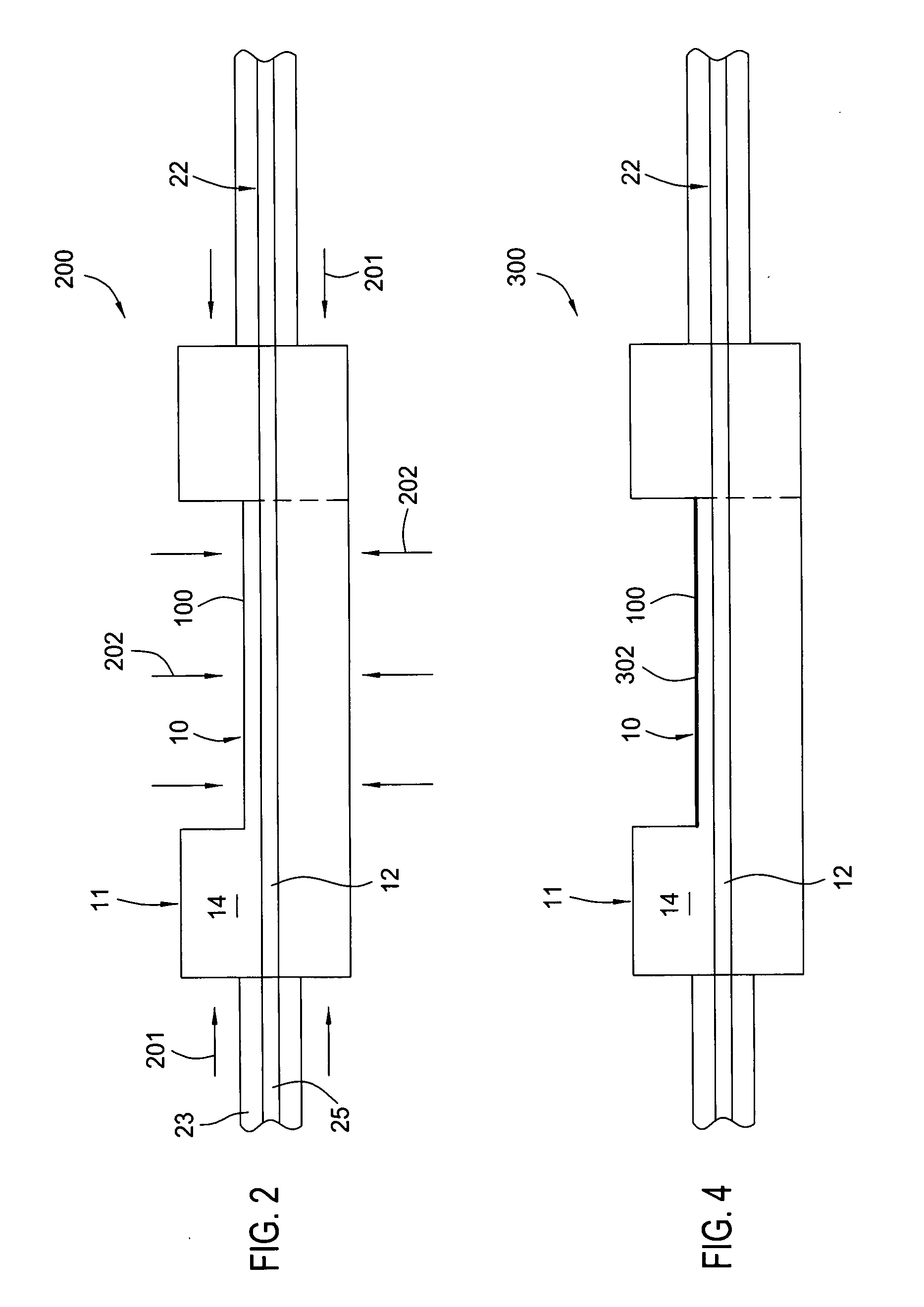Sensing device having a large diameter D-shaped optical waveguide
a technology of optical waveguides and sensors, applied in the field of optical sensors, can solve the problems of fiber with d-shapes, high loss of fibers, and difficult manufacturing, and achieve the effects of improving packaging options, facilitating use and manufacturing, and inherent mechanical rigidity
- Summary
- Abstract
- Description
- Claims
- Application Information
AI Technical Summary
Benefits of technology
Problems solved by technology
Method used
Image
Examples
Embodiment Construction
[0016]FIGS. 1 and 2 illustrate a large diameter D-shaped optical sensor 200 that is a waveguide with a generally D-shaped portion 10 and at least one core 12 surrounded by a cladding 14. Additionally, the shape of the waveguide forming the sensor 200 may include one or more circular portions 11. The sensor 200 comprises silica glass (SiO2) based material having the appropriate dopants to allow light 15 to propagate in either direction along the core 12 and / or within the sensor 200. Other materials for the sensor 200 may be used such as any glass material, e.g., silica, phosphate glass, other glasses, or solely plastic. Further, the sensor 200 may be a birefringent, polarization maintaining, polarizing, multi-core, or multi-cladding optical waveguide. The cladding 14 has an outer dimension of at least about 0.3 millimeters and the core 12 has an outer dimension such that it propagates the desired number of spatial modes. Thus, the outer dimension of the cladding 14 of the sensor 200 ...
PUM
| Property | Measurement | Unit |
|---|---|---|
| diameter | aaaaa | aaaaa |
| temperature | aaaaa | aaaaa |
| birefringence | aaaaa | aaaaa |
Abstract
Description
Claims
Application Information
 Login to View More
Login to View More - R&D
- Intellectual Property
- Life Sciences
- Materials
- Tech Scout
- Unparalleled Data Quality
- Higher Quality Content
- 60% Fewer Hallucinations
Browse by: Latest US Patents, China's latest patents, Technical Efficacy Thesaurus, Application Domain, Technology Topic, Popular Technical Reports.
© 2025 PatSnap. All rights reserved.Legal|Privacy policy|Modern Slavery Act Transparency Statement|Sitemap|About US| Contact US: help@patsnap.com



